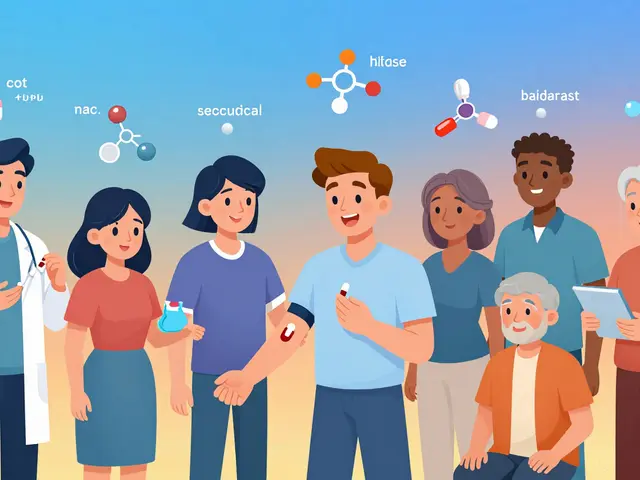Keto Diet: What Works, What’s Safe, and How to Start
Cutting carbs low enough to enter ketosis often trims several pounds fast — mostly water and stored glycogen. That quick change feels great but also brings side effects and drug interactions many people miss. This page gives clear, usable keto advice: what to eat, how to manage electrolytes, simple meal ideas, and when to check with your doctor.
Quick Keto Basics
Keto means low carbs, moderate protein, and high fat. Aim for roughly 20–50 g net carbs per day if you want steady ketosis; beginners often start under 30 g. Protein should be enough to keep muscle—about 1.2–1.6 g per kg of body weight for active people. The rest of calories come from fats: olive oil, avocado, nuts, butter, and fatty fish.
Foods to focus on: leafy greens, broccoli, eggs, salmon, avocados, cheese, and olive oil. Avoid sugar, bread, pasta, starchy tubers, and most fruit (berries are okay in small amounts). Keep snacks simple: olives, hard-boiled eggs, or a small handful of macadamia nuts.
Practical Tips & Safety
Expect a short "keto flu" when you start: headaches, tiredness, and lightheadedness. That’s often electrolytes and water loss. Fix it by drinking more, adding salt to food, and taking magnesium (200–400 mg nightly) and a potassium-rich food or supplement if your doctor agrees. Those three adjustments usually clear symptoms in 2–7 days.
If you take prescription meds, pause and check with your prescriber before changing carbs. People on insulin or sulfonylureas may need dose cuts to avoid low blood sugar. If you take blood pressure meds or diuretics, rapid fluid and electrolyte shifts can change how you respond to those drugs. Also mention any anticoagulants or seizure meds to your clinician—dose needs can shift when weight and diet change.
Watch kidney and liver health. Keto increases protein oxidation and fat metabolism; if you have chronic kidney disease or active liver issues, talk to a doctor first. Pregnant or breastfeeding people should avoid strict keto unless supervised by specialists.
Supplements that help many people: a good multivitamin, magnesium, and omega-3 fish oil. MCT oil can boost ketone levels and be a handy cooking or coffee add-in, but it adds quick calories—use it intentionally. If weight loss stalls, measure portion sizes, check hidden carbs (sauces, alcohol, low-carb treats), and track food for a week.
Simple 1‑day sample: breakfast—eggs fried in butter with spinach; lunch—grilled chicken salad with avocado and olive oil; snack—cheese and olives; dinner—salmon with roasted broccoli in olive oil. Drink water, tea, or black coffee.
Finally, plan for sustainability. Keto works well short-term for many people, but long-term success comes from a tasty, realistic plan you can stick with—whether strict keto, cyclical low-carb, or a lower-carb Mediterranean mix. If weight, blood sugar, or blood pressure changes quickly, get medical follow-up to adjust meds safely.
This article explores whether the popular keto diet can be beneficial or detrimental for those suffering from erosive esophagitis. We delve into the basic principles of the keto diet, examine how it may impact esophageal health, and offer practical tips for managing symptoms. With the right adjustments, keto might just surprise you as a viable option for easing digestive woes.



